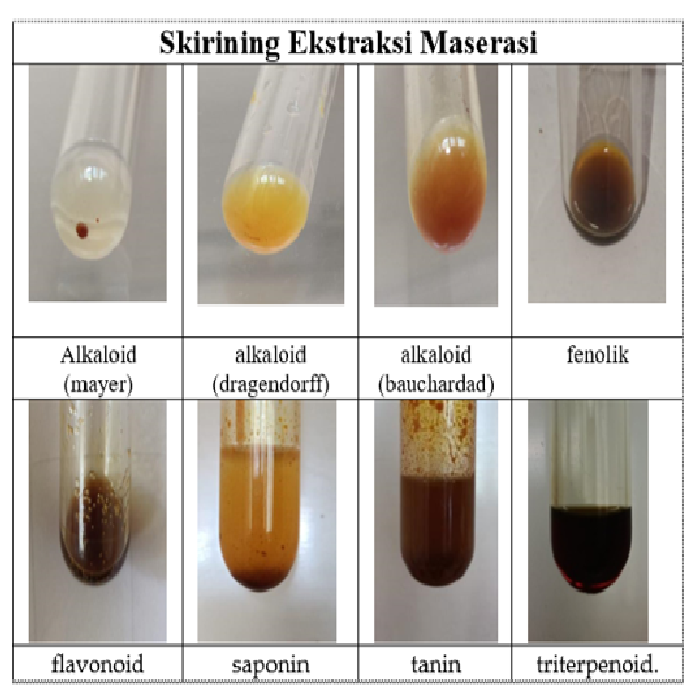Main Article Content
Abstract
Bangle (Zingiber purpureum Roxb.) is a family of Zingiberaceae that has the advantage of being a medicinal ingredient of economic value. The rhizome part is more widely used because it contains quite complex secondary metabolites. The content of secondary metabolites in rhizomes can be a candidate as a medicinal compound. The resulting secondary metabolite compounds are strongly influenced by the extraction method and solvent used. This study aims to determine the differences in phytochemical screening results on bangle rhizomes using maceration and refluks extraction methods. The research is descriptive qualitative which is carried out using several reagents, adapted to the phytochemical group (alkaloids, phenolics, flavonoids, saponins, tannins, steroids & triterpenoids). The research stages include sample preparation, the extraction process of maceration and refluks methods with 70% ethanol solvent, and phytochemical screening. The results of phytochemical screening on bangle rhizomes showed that the maceration and refluks extraction processes contain alkaloid compounds, phenolics, flavonoids, tannins & triterpenoids. The differences found in alkaloid compounds and flavonoids from refluks show more intensity compared to maceration. The conclusions of this study show that the extract of bangle rhizomes with the refluks method produces a higher intensity of alkaloid and flavonoid compounds compared to maceration.
Keywords
Phytochemical screening
Maceration
Refluks
Bangle Rhizome
Article Details

This work is licensed under a Creative Commons Attribution 4.0 International License.
How to Cite
Daryanti, E. P., Alfiah, F. B., & Melatiara, D. A. (2023). Perbandingan Skrining Fitokimia Esktrak Etanol Rimpang Bangle (Zingiber purpureum) Metode Maserasi dan Refluks. Borneo Journal of Pharmascientech, 7(2), 52-58. https://doi.org/10.51817/bjp.v7i2.479
